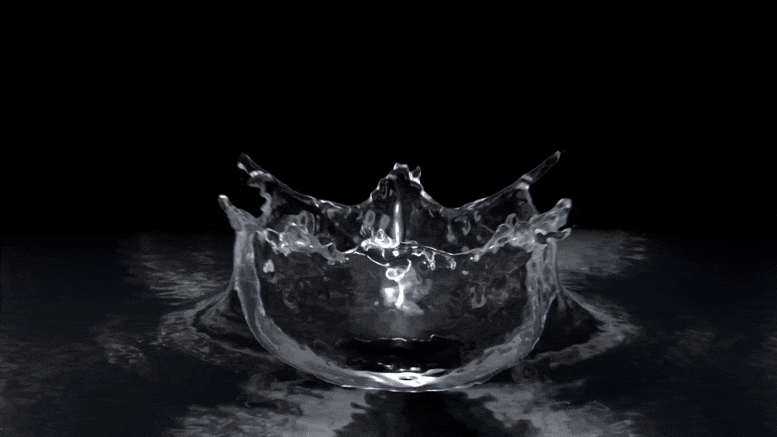Chemiker entdecken einen Mechanismus für peptidbildende Reaktionen im Wasser, die zu Proteinen und damit zum Leben auf der Erde führen. Es könnte auch zu einer schnelleren Entwicklung von Medikamenten zur Behandlung der schwächsten Krankheiten der Menschheit führen.
Wassertropfen enthalten die geheime Zutat für den Aufbau von Leben
Chemiker enthüllen den Schlüssel zur Chemie der frühen Erde, der Wege zur Beschleunigung der chemischen Synthese für die Wirkstoffforschung eröffnen könnte.
Chemiker der Purdue University haben einen Mechanismus für peptidbildende Reaktionen in Wasser entdeckt – etwas, das Wissenschaftler seit Jahrzehnten verblüfft.
„Das ist im Wesentlichen die Chemie hinter dem Ursprung des Lebens“, sagte Graham Cooks. Er ist Henry Bohn Hass Distinguished Professor of Analytical Chemistry am Purdue’s College of Science. „Dies ist die erste Demonstration, dass ursprüngliche Moleküle einfach sind[{“ attribute=““>amino acids, spontaneously form peptides, the building blocks of life, in droplets of pure water. This is a dramatic discovery.”
“This is essentially the chemistry behind the origin of life.” — Graham Cooks
This water-based chemistry, which leads to proteins and ultimately to life on Earth, could also lead to the faster development of medicines to treat humanity’s most debilitating diseases. The team’s discovery was published today (October 3, 2022) in the journal Proceedings of the National Academy of Sciences.
Scientists have theorized for decades that life on Earth began in the oceans. However, the chemistry behind this remained an enigma. Raw amino acids — something that meteorites delivered to early Earth daily — can react and latch together to form peptides. These are the building blocks of proteins and, eventually, life. Strangely, the process requires the loss of a water molecule, which seems exceedingly improbable in a wet, aqueous, or oceanic environment. For life to form, it required water. However, it also needed space away from the water.
Cooks, an expert in mass spectrometry and early Earth chemistry, and his research team have uncovered the answer to the riddle: “Water isn’t wet everywhere.” On the margins, where the water droplet meets the atmosphere, extremely quick reactions can take place, transforming abiotic amino acids into the building blocks of life. Therefore, fertile landscapes for life’s potential evolution were in places where sea spray flies into the air and waves pound the land, or where fresh water burbles down a slope.
“This is the first demonstration that primordial molecules, simple amino acids, spontaneously form peptides, the building blocks of life, in droplets of pure water. This is a dramatic discovery.” — Graham Cooks
The chemists have been using mass spectrometers to examine chemical reactions in droplets containing water for more than 10 years.
“The rates of reactions in droplets are anywhere from a hundred to a million times faster than the same chemicals reacting in bulk solution,” Cooks said.
The swift rates of these reactions make catalysts unnecessary, speeding up the reactions and, in the case of early Earth chemistry, making the evolution of life possible. Decades of scientific investigation have been focused on figuring out how this mechanism works. The secret of how life emerged on Earth can help scientists better understand why it happened and guide their search for life on other planets, or even moons.
Understanding how amino acids built themselves up into proteins and, eventually, life forms revolutionizes scientists’ understanding of chemical synthesis. That same chemistry may potentially help synthetic chemists identify and create novel medications and therapeutic treatments for illnesses by accelerating key processes.
“If you walk through an academic campus at night, the buildings with the lights on are where synthetic chemists are working,” Cooks said. “Their experiments are so slow that they run for days or weeks at a time. This isn’t necessary, and using droplet chemistry, we have built an apparatus, which is being used at Purdue now, to speed up the synthesis of novel chemicals and potential new drugs.”
Reference: “Aqueous microdroplets enable abiotic synthesis and chain extension of unique peptide isomers from free amino acids” by Dylan T. Holden, Nicolás M. Morato and R. Graham Cooks, 3 October 2022, Proceedings of the National Academy of Sciences.
DOI: 10.1073/pnas.2212642119

